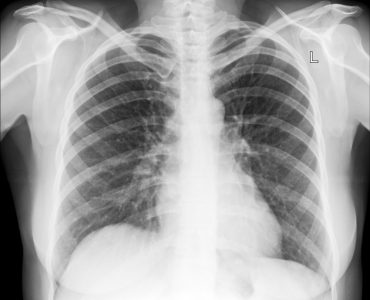Ultrasound scan or the sonograph is used to create an image of the organ in the body. The procedure uses high frequency to create the image. Since the sound waves are used instead of radiation it is considered to be completely safe.
Ultrasound is high frequency sound that can be detected only by a ultrasound scanner and cannot be heard by human ear.
High frequency sound waves are directed at the body. These sound waves pass through soft tissues and liquids but cannot pass through solid objects. The ultrasound that hits a solid object bounces back as echo. The strength of the reflected echo depends on density of the object. A computer is used to translate reflected ultrasound into a image. The frequency of sound waves is around 10 million cycles per second.(10MHz).
Applications
Its main application is the detection of size, shape and structure of organs of the body which helps in detecting abnormalities.
Some of the more specific applications are:
Monitoring foetus
Ultrasound scan produces clear three dimensional (3D) or four dimensional (4D) image of foetus. It can also display real time moving images. This helps to keep track of the development and abnormalities of foetus. It also indicates the numbers of foetus in the uterus. Ultrasound scan is compulsorily recommended in pregnant women.
Detecting heart diseases:
Ultrasound scan is extensively used for detecting heart ailments. Abnormalities in valves, auricles, ventricles can be detected by ultrasound scan. Enlargement of the aorta can also be detected by ultrasound scan. The process is referred to as echocardiogram.
Prostate gland examination:
Ultrasound is routinely used to detect cancers and abnormal growth using accurate images of prostate produced by ultrasound scan.
Other organs examination:
Ultrasound scan are also in use for examining uterus, ovaries, liver, pancreas, kidney, gall bladder for the presence of tumours, gall stones.
Surgical procedures
Surgical procedures such as biopsies, makes use of ultrasound scan which guides surgeons during complicated surgeries.
Ultrasound can also be used for the treatment of rheumatoid arthritis, muscle pain and fractures.
Procedure
Certain precautions have to be followed before an ultrasound scan is done. They include:
Pregnant women are asked to drink two pints of water before having a foetal scan.
Food or water consumption is not allowed in some cases just before the procedure.
There are two types of ultrasound scan:
External ultrasound
Internal or endoscopic ultrasound
External ultrasound
A device called Transducer, which resembles a blunt pen, is moved on skin, over the part of the body to be examined. Gel is applied over skin for the smooth movement of transducer. The transducer is connected to a computer. Ultrasound waves received back from the structures of the body are displayed as images on the monitor. This method is often used to examine foetus and heart. It is a pain less procedure.
Internal or endoscopic ultrasound.
It is used to examine organs such as liver, pancreas and prostate gland. Trans-vaginal ultrasound scan is used to examine uterus and ovaries. In this procedure a long, thin and flexible tube is inserted into the mouth or the rectum. The endoscope has a light device and a ultrasound device at the end. The images are generated as in the external ultrasound.
External ultrasound can be very uncomfortable. There can also be side effects such as infection and internal bleeding.
Limitations
Ultrasound cannot pass through air, gas, bones
Lungs, intestines cannot be examined












